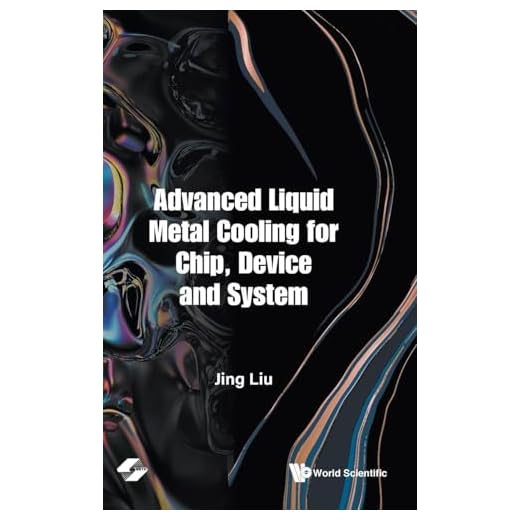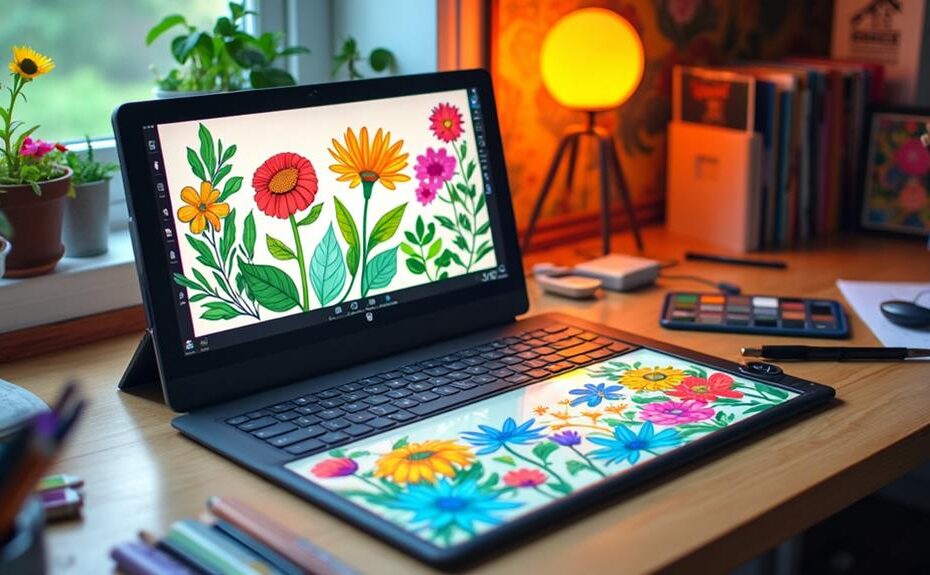



To optimize your mini PC workflow for creative projects, start by selecting a powerful model equipped with an AMD Ryzen 9 or Intel Core i7 processor and at least 32GB RAM. Use a dedicated graphics card, like the NVIDIA GeForce RTX, for video editing and real-time rendering. Pair this with NVMe SSD storage to guarantee fast performance. For software, rely on tools like Adobe Premiere Pro for video and Ableton Live for music production. Maintain your system with effective cooling solutions and consider future upgrades. You'll find more insights on maximizing your creative potential with the right setup.
Key Takeaways
- Choose a mini PC with powerful processors like AMD Ryzen 9 or Intel Core i7 for demanding creative applications.
- Ensure at least 32GB of RAM and dedicated GPUs for seamless multitasking and efficient rendering.
- Utilize SSD storage, preferably NVMe, for faster read/write speeds and improved performance during creative tasks.
- Optimize software settings by enabling hardware acceleration and keeping drivers up to date for compatibility.
- Implement effective cooling solutions, such as liquid metal cooling or external fans, to prevent overheating during intensive workloads.
Choosing the Right Mini PC
When choosing the right mini PC for your creative projects, you'll want to focus on several key specifications that can greatly impact your workflow. First, prioritize powerful processors like the AMD Ryzen 9 or Intel Core i7. Mini PCs featuring the high performance from 11th Gen Intel Core processor efficiently handle resource-intensive applications, vital for tasks like video editing.
Next, verify you have at least 16GB RAM, though 32GB is ideal for seamless multitasking, especially during demanding tasks like 3D modeling. Dedicated graphics cards, such as NVIDIA GeForce or AMD Radeon, are also essential. They accelerate video editing processes and improve rendering capabilities.
Don't overlook connectivity options; your mini PC should have multiple USB ports, HDMI or DisplayPort outputs for external displays, and Thunderbolt ports for rapid data transfer. These features guarantee you can work smoothly with various peripherals and displays.
Optimizing Performance for Creative Tasks
After selecting the right mini PC, fine-tuning its performance for creative tasks is essential to maximizing productivity. Start by confirming your system features a powerful CPU, such as the AMD Ryzen 9 7940HS or Intel Core i7, along with at least 32GB of RAM. This combination effectively handles demanding tasks like video editing and 3D rendering. The exceptional performance of the Ryzen 9 7940HS, with its 8 cores and 16 threads, provides a significant advantage for multitasking and intensive applications.
Next, utilize SSD storage, preferably NVMe, to achieve fast read/write speeds. This setup will drastically improve boot times and the loading of large project files in software like Adobe Premiere Pro. To enhance performance further, leverage dedicated GPUs, such as NVIDIA GeForce RTX or AMD Radeon graphics, which facilitate real-time rendering and hardware acceleration for graphic-intensive applications.
Additionally, refine your software settings by enabling hardware acceleration and adjusting memory usage preferences. This guarantees your mini PC operates smoothly under heavy workloads. Don't forget to regularly update your GPU and system drivers to maintain compatibility with the latest creative applications, which will help sustain peak performance. By following these steps, you position yourself for success as a creative professional in a compact design environment.
Essential Software for Creative Workflows
Creative professionals frequently rely on a diverse array of software to streamline their workflows and enhance productivity. When it comes to video editing on a mini PC, tools like Adobe Premiere Pro and DaVinci Resolve are indispensable. They demand high processing power, especially when working with 4K and 8K video projects, guaranteeing smooth playback and rendering. Mini PCs equipped with performance metrics and benchmarks guarantee that the necessary processing power is available for these intensive tasks.
For graphic design and content creation, Adobe Photoshop and Autodesk Maya are essential. These applications require significant RAM—ideally 32GB or more—and fast SSD storage for seamless performance, especially when dealing with complex graphics.
In the domain of music production, software like Ableton Live and Pro Tools excels, needing robust processing power and low-latency audio interfaces for high-quality sound output. Animation and visual effects typically leverage Blender and Adobe After Effects, both of which necessitate powerful GPUs for real-time rendering of intricate scenes.
Lastly, collaboration tools like Adobe Creative Cloud and Figma are crucial for team projects, enabling real-time sharing and feedback. By integrating these essential software tools, you can maximize the capabilities of your mini PC and elevate your creative workflows.
Effective Cooling Solutions
Efficiency in cooling solutions is vital for mini PCs engaged in creative projects, as high-performance components generate substantial heat during demanding tasks. The Minisforum UM790 Pro, for instance, features a Cold Wave 2.0 liquid metal cooling system, which greatly enhances thermal management and guarantees performance stability during prolonged use.
Mini PCs like the Apple Mac Studio are engineered with a compact chassis that optimizes airflow, preventing overheating even under heavy workloads. However, if you're pushing your mini PC to its limits with resource-intensive tasks, consider incorporating additional cooling methods. External fans or cooling pads can help maintain lower temperatures and extend the lifespan of your device.
Regular maintenance is important, too. Cleaning dust from vents and verifying fan functionality can greatly impact your mini PC's cooling efficiency. Neglecting these aspects can lead to thermal throttling, which adversely affects performance during critical moments of your creative work. By prioritizing effective cooling solutions, you'll safeguard your mini PC and guarantee it operates reliably, allowing you to focus on your projects without worrying about overheating issues.
Scalability and Future Upgrades
Maintaining ideal cooling is just one aspect of ensuring your mini PC can handle the demands of creative projects. Scalability is equally significant; when selecting a mini PC, prioritize models that support high-speed DDR4 or DDR5 memory. This allows you to upgrade your RAM capacity to 64GB or more as your project demands increase. Look for mini PCs equipped with multiple M.2 slots for NVMe SSDs, enabling easy and efficient storage upgrades to accommodate the large files typical in video editing and 3D modeling.
Consider systems that offer upgradable features, like dual-channel RAM configurations and expandable storage. These enhancements contribute to the longevity and adaptability of your setup for evolving creative workflows. Robust cooling solutions are essential, as they maintain performance during resource-intensive tasks and allow for higher overclocking potential when you make upgrades.
Recommended Mini PC Models
When it comes to selecting the right mini PC for your workflow, several models stand out due to their performance and expandability. The Minisforum UM790 Pro, equipped with an AMD Ryzen 9 7940HS processor and 32GB DDR5 memory, excels in complex video editing tasks and creative workflows. If you're an Apple enthusiast, the Mac mini (M2 Pro, 2023) offers an 8-core CPU and 10-core GPU configuration, supporting up to 24GB unified memory for enhanced multitasking in professional applications.
For those needing expandability, the Intel NUC 13 Pro supports up to 64GB of DDR4 memory and features dual Thunderbolt 4 ports, making it an excellent choice for high-performance needs. The Zotac ZBOX Magnus One ECM53060C stands out with its discrete NVIDIA RTX 3060 GPU and Intel Core i5-12500H processor, ensuring efficient 4K video playback. Finally, the HP Z2 Mini G9 Workstation, equipped with powerful Intel Xeon or Core i9 processors, offers professional-grade NVIDIA RTX graphics for demanding tasks like 3D rendering. Each of these mini PCs caters to different aspects of video editing and creative workflows, providing powerful performance tailored to your needs.
Disclosure: As an Amazon Associate, I earn from qualifying purchases.




